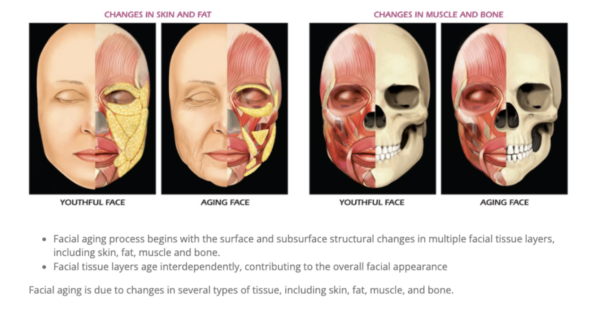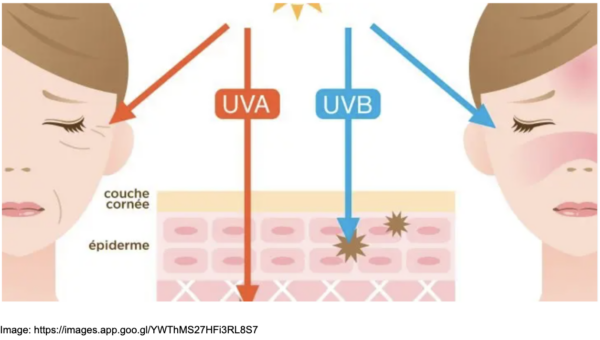Skin Health: Ageing Gracefully

Skin Health: Ageing Gracefully
Skin Health: Ageing Gracefully
"Don't you dare touch any one of those wrinkles, I earned every single one of them."
—Audry Hepburn
Emma Ferria, Audry Hepburn's granddaughter, shares a story about her legendary grandmother that truly embodies Hepburn's concept of her own beauty.
"An American Photo Magazine asked Hepburn toward the end of her life to choose her favorite photograph for a special they were doing on celebrities' favorite photos of themselves.
Hepburn chose the photograph above, taken by John Issac, who asked if she wanted him to do some Photoshop because you could see her wrinkles.
Hepburn promptly replied…
"Don't you dare touch any one of those wrinkles, I earned every single one of them."
Hepburn chose the one above as her favorite of all the famous pictures of herself. She was 59 years old in 1988 when this photo was taken.
I'm just guessing, but it's likely Audry was post-menopause in the photograph.
I am 5 years post-menopause. As a health coach specializing in metabolism and hormones, I thought I had this post-menopause thing all buttoned up. Out of nowhere this year, I'm experiencing some pretty significant changes in the appearance of my skin.
So I reached out to my good friend Dr. Stefania to learn more about what's causing these changes in my skin health under the surface.
It's important to keep in mind there are elements of our changing health that we can impact with our daily decisions, and there are elements of our changing health that we don't have as much control over without pharmaceutical or surgical intervention.
Here's the approach we take in RESTORE—When we understand what's happening inside our bodies, we get to choose how we respond. I'm shooting to respond like Audry!
Take it away, Dr. Stef!
Dr. Stef's writing now…
Menopause tends to be a period of rapid change for the skin. Have you ever wondered why?
You may think it's all about your age. Aging is part of it, but it's not the whole story.
Estrogen levels decline after menopause. This hormonal shift has a significant impact on the health and function of the skin. Skin is one of the most affected organs during menopause, especially skin quality.
Estrogen loss impacts the quality of skin in many ways:
- Collagen production (decreased)
- Water content (decreased)
- Fat (reduced)
- Elasticity (reduced)
- Thickness (reduced)
PMID: 31811831
Rather than explaining how estrogen is involved in those changes, its physiological effects are best captured in the image below. Without estrogen, the skin aging process is accelerated. This is especially evident in the first five years after menopause.

Reference: https://grossepointedermatology.com/conditions-treatment/anatomy-of-facial-aging-2/
Age vs. Estrogen Deficiency
Although aging is undoubtedly a factor, chronological age is not the cause of skin aging. Years without estrogen matter more.
Let's consider collagen content as an example. In the first five years of menopause, collagen decreases by up to 30 percent. That parallels bone loss.
This means estrogen deficiency is highly associated with skin (and bone) changes, not age.
For some, this understanding leads to wondering about hormone therapy; let me say this.
Topical estrogen therapy (not oral) can help delay skin aging and improve skin health, but it may not be the best option for you.
If you're curious about menopausal HRT, I highly encourage you to talk to your doctor about it. We'll also be diving deeper into the topic of HRT in the May RESTORE health article.
Intrinsic & Extrinsic Factors Impact Our Skin
Many processes are involved in skin aging, which can be divided into two broad categories - intrinsic and extrinsic factors.
Intrinsic aging occurs gradually over time and affects tissues throughout the body. Estrogen loss is considered intrinsic (happening inside the body). Although we can influence intrinsic aging factors, we have less direct control over these processes.
Extrinsic factors age our skin from the outside in. Extrinsic aging is driven by environmental factors like lifestyle, nutrition, and UV radiation exposure that accelerate aging. Extrinsic factors are easier to target because they are often within our control to some degree—for example, sun exposure. Most people are aware of the aging effects of the sun and what to do about it.
Inflammation: The Common Thread
Inflammation is the common underlying thread in the skin aging process. All intrinsic and extrinsic aging factors contribute to skin aging through the formation of ROS and the reduced ability to clear them away (not enough antioxidants).
–ROS or Reactive Oxygen Species (also known as free radicals) = Fancy words for inflammation.–
Reactive oxygen species occur as a side effect of many reactions occurring naturally in the body. Under normal conditions (especially when we're young), ROS are removed from the body by antioxidant processes. When these natural mechanisms are disrupted or fail to keep up with the damage, ROS accumulate in excess and contribute to the skin aging process.
Skin aging is accumulated cellular damage that generates a lot of ROS. Over time, this creates a reinforcing feedback loop. We can't scavenge free radicals effectively, AND we're creating more of them.
Prior to menopause, estrogen plays a protective role against inflammatory skin changes. If you're no longer making estrogen or replacing it through hormone therapy, then estrogen is no longer around to buffer those inflammatory effects.
How do we break this loop?
We break this loop by reducing sources of inflammation and supporting the body's ability to clean up inflammation using these strategies.
Strategy One: Prevention of further photoaging
According to several sources, exposure to UV radiation accounts for about 80% of facial aging. UV radiation (in particular UV-A) is emerging as the major contributor to skin aging due to its sneaky ability to penetrate deeper into the skin layers (dermis) compared to UV-B (epidermis).
Here's an easy way to remember the effects of UV radiation.
UVA = A for Aging
UVB = B for Burning (increased risk of Cancer, source of inflammation, and DNA damage)

Image: https://images.app.goo.gl/YWThMS27HFi3RL8S7
Quick Tip. Ensure that your sunblock is protective against UV-A, folks! On the package/bottle, look for UVA with a circle around it.
UV protection and limiting sun exposure are key prevention strategies.
Sun exposure is the primary factor of extrinsic skin aging, so it's always first-line advice. By limiting sun exposure, we decrease the generation of damaging ROS. We also preserve our internal cellular defense mechanisms (antioxidants).
Strategy Two: Antioxidants are critical in protecting against the cellular changes these troublemakers induce.
This is why many anti-aging skincare products contain antioxidants (AOs). Think CoQ10, melatonin, Vit C & E, quercetin, resveratrol. Topicals are known to have varying results with respect to their anti-aging effects. They are not a complete waste of money, though.
Strategy Three: Work with the circadian rhythm of your skin.
Topicals are most effective when used at the right time of day and with an understanding of their effects and limitations.
Skin changes throughout the day. A key change is skin permeability, which is higher at night than during the day. Another key skin change that peaks at night is the repair of damaged skin cells (as a result of UV exposure during the day). These factors of increased inflammation and permeability suggest that moisturizers and topical AOs offer increased benefits when used in the evening. Not only is penetration greater, which enhances effectiveness, topical AOs are supporting specific processes that peak at night. PMID: 31641418.
Quick Tip: Lock in moisture to prevent water loss by applying hydrating moisturizers at night as your final step. If you only apply one topical before bed, this might be your best bet! Hydrated skin always looks more youthful and fresh. During the day, UV protection is key.
Targeted topicals used at optimal times of the day in conjunction with innovative non-surgical cosmetic procedures (lasers, chemical peels, microneedling, etc) can help improve the appearance and function of skin.
Beyond Cosmetics: Managing Inflammation To Age Gracefully
In addition to targeted topicals and procedures selected for your specific skin needs, inflammation should also be managed inside the body. Your body's clues (signs, symptoms, and lab studies) can point to sources and/or drivers of internal inflammation.
The primary sources of inflammation inside the body come from physiological imbalances.
These imbalances include blood sugar, nutrient deficiencies, liver issues/detoxification defects, dysbiosis (gut imbalances), immune challenges, and chronic stress.
We don't often think about stress this way, yet these imbalances are key to identifying because of their downstream effects.
Physiological stress leads to compensatory behaviors that reinforce these imbalances. Over time, loops of dysfunction are formed.
Ann, jumping in again here with my two cents…
Let's unpack this a bit more—Imbalances in blood sugar put stress on your body, nutrient deficiencies like low vitamin D stress your body, too many toxins hanging out in your liver put stress on your body, poor gut health puts stress on your body, being sick puts stress on your body, living in a state of chronic emotional stress puts stress on your body.
Any time stress is high, humans are more likely to exhibit compensatory behavior like eating crappy food, not getting enough exercise, skimping on sleep, and falling into an all-or-nothing mindset, which then exacerbates the original stressor and creates a feedback loop that can be hard to break.
We all have our vulnerabilities. Get curious about this because stress chemistry is inflammatory. Identifying the primary drivers of stress and dysfunction in your body is critical so that loops can be spotted and disrupted.
Strategy Four: Observe how stress shows up in your body so you can reduce sources of inflammation and support your body's ability to clean up inflammation.
Get curious about your lifestyle habits, including nutrition and supplements.
One word comes to mind right now. Synergy. The enhanced benefit achieved by two or more elements working together instead of on their own is known as synergy. Prioritizing and stacking interventions to target both objectives will be more effective than focusing on either alone.
Reduce sources of inflammation.
Support the body's ability to clean up inflammation.
Strategy Five: Nourish your way to skin health.
Choosing to eat ½ avocado with some berries and nuts instead of a slice of cake goes a long way when it comes to the health of your skin.
Sugar increases collagen glycation, a process that compromises the integrity of collagen. Collagen provides mechanical support and structure to the skin. The result is wrinkles, loss of elasticity, and decreased function of the skin. Choosing not to eat the slice of cake is beneficial because it reduces inflammation.
Replacing that slice of cake with plant foods or nutrient-rich foods that contain essential nutrients and antioxidants helps counter ROS and its inflammatory effects. By regulating inflammatory and oxidative processes, we improve the skin's condition and enhance its function.
Antioxidant-rich diet: regulates inflammation
Benefits:
Helps prevent and treat ROS-associated skin changes
Improved skin condition and function; management of inflammatory skin conditions
Plant-based diet: provides essential nutrients
Benefits:
Potential wrinkle reduction: "Nutrients like vitamins C and E, zinc, and omega-3 fatty acids are known to promote healthy skin and may aid in reducing the appearance of wrinkles." DOI 10.3389/fphys.2023.1279371
Enhanced skin elasticity and firmness with consumption of avocados DOI 10.3389/fphys.2023.1279371
Overall improved skin condition and function
Nutrient-rich foods: reduce glycation and AGE accumulation (AGEs make collagen rigid, which affects skin firmness)
Benefits:
Specific dietary compounds have been shown to inhibit glycation-mediated aging (the aging effects from dietary sugar consumption)
Enhanced elasticity
Improved appearance and function of skin affected by photoaging
Reducing alcohol and sugar intake: reduces collagen glycation process due to AGE formation.
Benefits:
Helps prevent premature skin aging.
Strategy Six: Collagen + Antioxidants, a beautiful synergy of repairing nutrients.
If you're interested in taking action right now, this meta-analysis (which included 26 RCTs) concluded the benefits of oral collagen for skin health. In particular, it looked at skin hydration and elasticity, which characterize skin aging.
How to use collagen for best effects according to the research.
Long-term supplementation (greater than eight weeks) was better than short-term use (less than 8 weeks). Interestingly, the source of collagen did not seem to make a big difference; however, collagens extracted from chicken were the weakest in terms of efficacy (on skin hydration only).
One study took an approach that I recommend. The favorable effects of oral collagen supplementation on skin elasticity can be enhanced when using a mixture of approx. 10 g of collagen along with vitamins A, C, E, and zinc (ACE + Zinc) - all antioxidants. Some people include selenium in that mix when thyroid support is desired (ACEs + Zinc). Now you understand why antioxidants are so critical.
The beneficial effects of collagen supplementation may be enhanced with a synergistic approach. Antioxidant nutrients help repair damaged skin cells and reduce inflammation (by clearing away ROS), while collagen is a building block for new skin cells.
Maintaining healthy skin requires an inside-out and outside-in approach.
Aging skin undergoes structural and functional changes, leading to impairments in essential skin protective functions and overall health. There is an increasing awareness of skin health as a significant indicator of overall health and well-being. If we want to achieve and maintain healthy skin, strategies should address intrinsic and extrinsic sources of aging.
Outside-in approaches address extrinsic factors through lifestyle. Safe sun exposure can prevent further damage, and targeted skin topicals and procedures can help decrease skin damage by improving skin quality and texture. In a holistic approach, topicals and cosmetic procedures are helpful, especially if used appropriately (i.e., when synchronized with the skin's circadian rhythm). Still, they are limited if internal sources of inflammation are not identified and treated.
Inside-out approaches address your vulnerabilities (aka sources of stress).
Start looking for clues. When you are stressed, how does it show up in your body?
Stress chemistry is inflammatory. Identifying the primary drivers of stress and dysfunction in your body is critical.
Multiple systems will likely be affected because the factors that kick-start chronic illness are driven and perpetuated by inflammatory processes (loops will form). A multi-systems approach is necessary to break loops of inflammatory-driven pathways - a foundational piece to access inner skin health.
Ann here again with final thoughts…
The most important thing you can do to support a healthy body, mind, and spirit is to listen to your body's cues daily and respond nourishingly. This holds true for every organ in your body, including your body's largest organ, your skin.
As always, remain curious, lean into your courage, and approach your health with compassion. Health is a journey.
Have questions, we are here to help!
Ann Hackman
Stefania Tiveron
